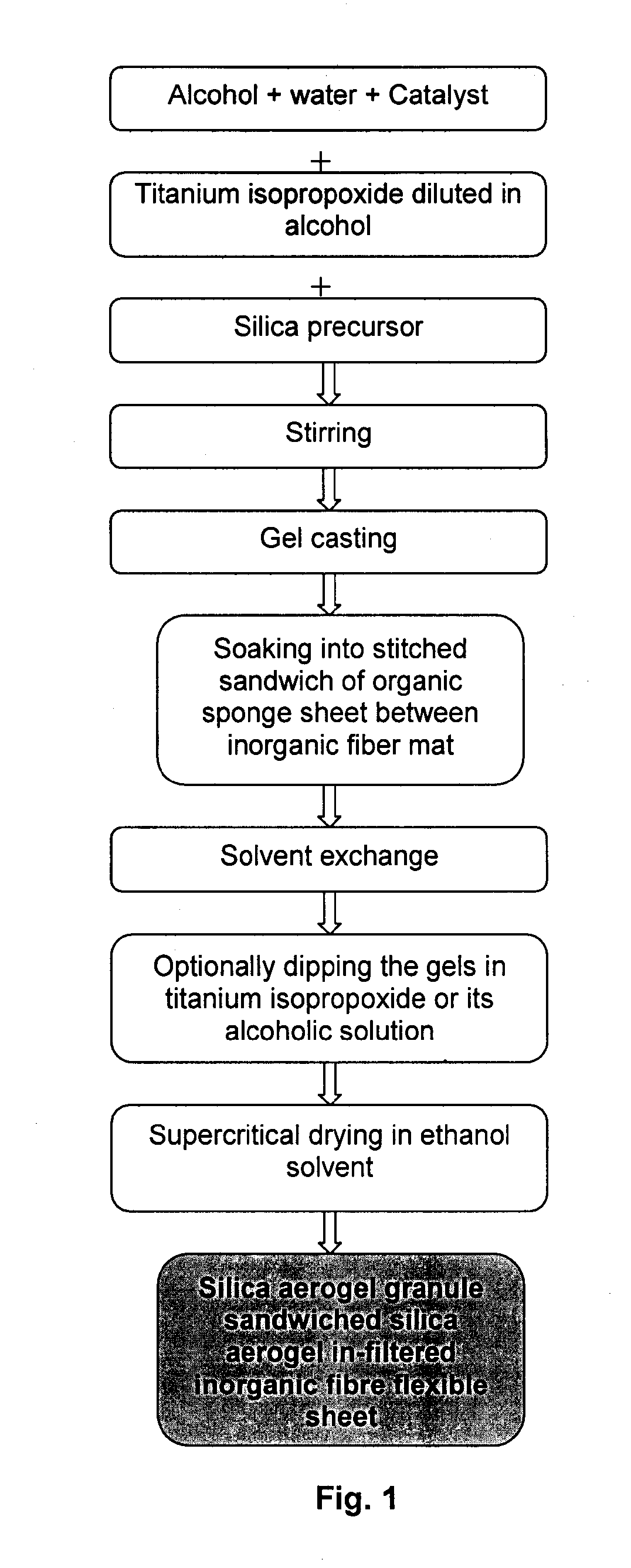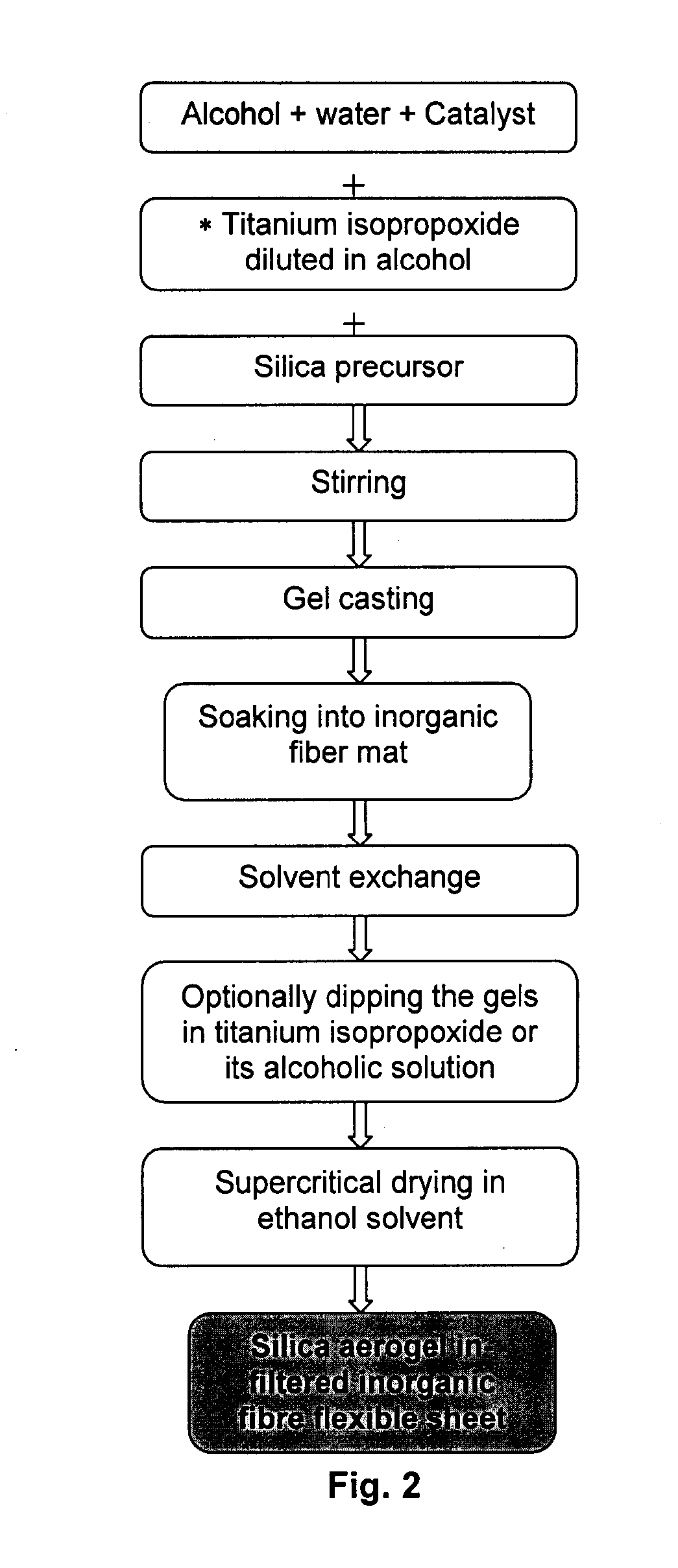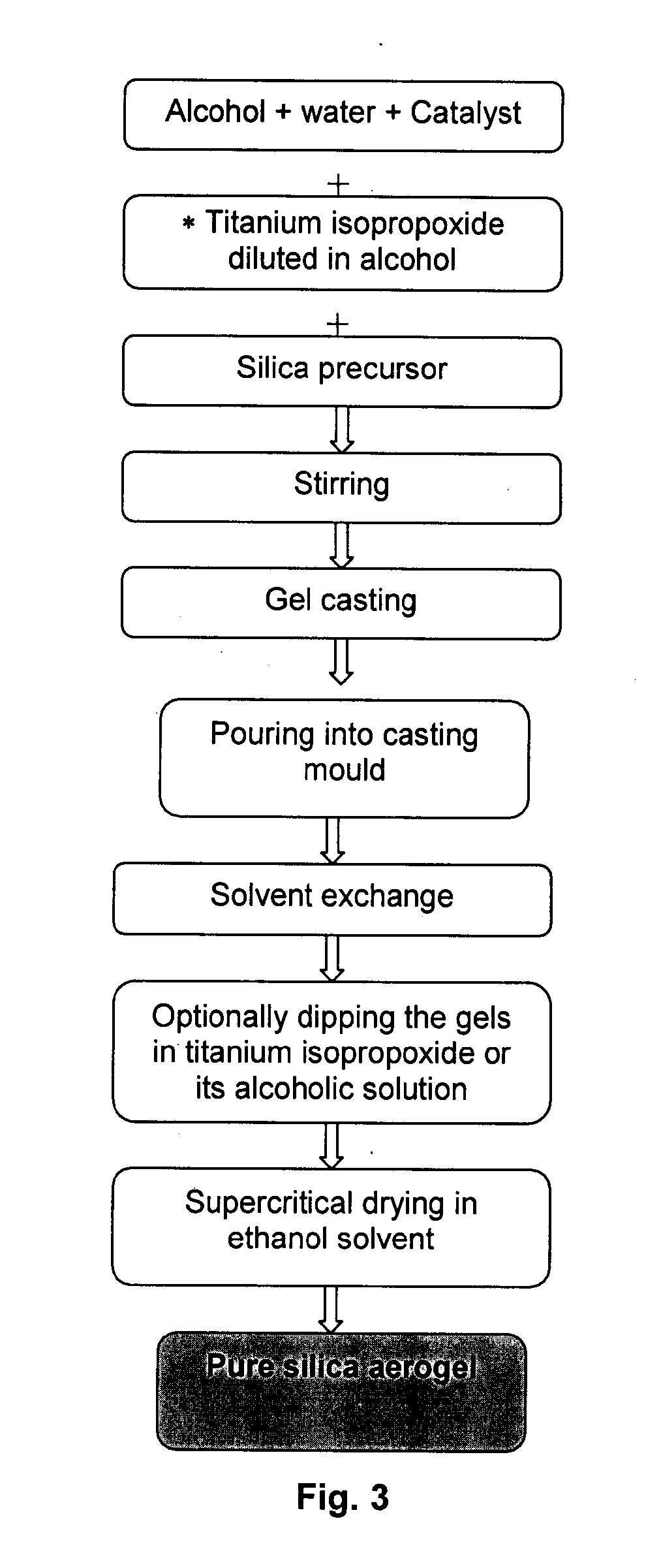Improved process for producing silica aerogel thermal insulation product with increased efficiency
a technology of aerogel and thermal insulation product, which is applied in the direction of thermal insulation pipe protection, domestic applications, textiles and paper, etc., can solve the problems of inability to uniformly distribute silica aerogel in the further formed gel from sol, complex process, and added so as to achieve enhanced suppression of radiative heat transport, reduce cost and added step, and reduce cost
- Summary
- Abstract
- Description
- Claims
- Application Information
AI Technical Summary
Benefits of technology
Problems solved by technology
Method used
Image
Examples
example 1
[0100]In the first step, 412 ml ethanol, 385 ml distilled water, 16.5 ml NH4F (0.5M) and 1.65 ml NH3 solution taken in flat round bottom flask under stirring. The titanium 2.75 ml isopropoxide was diluted in 165 ml of ethanol and added to above mixture slowly. Then 275 ml tetraethoxyorthosilicate and 110 ml of methyl trimethoxysilane was added to this mixture while stirring. The resulting sol was transferred into a plastic container where it was converted into gel in 5-7 minutes. Thus formed gel was kept for aging to strengthen the gel network at room temperature for ˜1 day. Finally, the gel was removed form the plastic container and immersed into ethanol for 3 days to exchange the liquid and bi-products inside the gel. The ethanol was replaced with a fresh lot everyday. The gel was then submitted to high temperature supercritical drying in the pressure reactor. The reactor temperature and pressure was raised to 260° C. and 80 bars pressure. This temperature and pressure condition w...
example 2
[0101]In the first step, 375 ml ethanol, 350 ml distilled water, 25 ml NH4F (0.5M) and 1.5 ml NH3 solution taken in a beaker under stirring. The titanium 5 ml isopropoxide was diluted in 150 ml of ethanol and added to above mixture slowly. Then 250 ml tetraethoxyorthosilicate and 100 ml of methyl trimethoxysilane was added to this mixture while stirring. This sol was soaked in 10 mm thick ceramic fibre non-woven blanket of 30 cm×30 cm size. Within 5-10 minutes the sol soaked in the fibre blanket was solidified. Thus formed composite gel was kept for aging in an air tight plastic container to strengthen the gel network at room temperature for ˜1 day.
[0102]Finally, the composite gel was removed form the plastic container and immersed into ethanol for 3 days to exchange the liquid and bi-products inside the gel. The ethanol was replaced with a fresh lot everyday. The gel was then submitted to high temperature supercritical drying in the pressure reactor. The reactor temperature and pre...
example 3
[0103]The silica aerogel prepared as per the procedure described in Example 2 except where in place of 5 ml titanium isopropoxide, 0.5 ml is added which leads to in-situ formation of about 0.1% titanium dioxide in the final product. In another experiment no titanium isopropoxide is added. to get pure silica aerogel flexible sheet sample without any titanium dioxide The infra red radiation reflection property was tested for these two samples with 0.1% titanium dioxide and no titanium dioxide after heating it in air at 400° C. FIG. 4 depicts the increase in the infra red reflectivity in the wavelength range of 3-7 μm due to the presence of titanium dioxide which is ≤1% in concentration compared to the sample with no titanium dioxide.
PUM
| Property | Measurement | Unit |
|---|---|---|
| Temperature | aaaaa | aaaaa |
| Temperature | aaaaa | aaaaa |
| Time | aaaaa | aaaaa |
Abstract
Description
Claims
Application Information
 Login to View More
Login to View More - R&D
- Intellectual Property
- Life Sciences
- Materials
- Tech Scout
- Unparalleled Data Quality
- Higher Quality Content
- 60% Fewer Hallucinations
Browse by: Latest US Patents, China's latest patents, Technical Efficacy Thesaurus, Application Domain, Technology Topic, Popular Technical Reports.
© 2025 PatSnap. All rights reserved.Legal|Privacy policy|Modern Slavery Act Transparency Statement|Sitemap|About US| Contact US: help@patsnap.com



